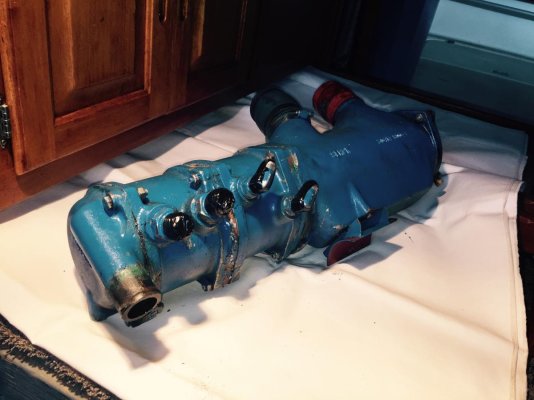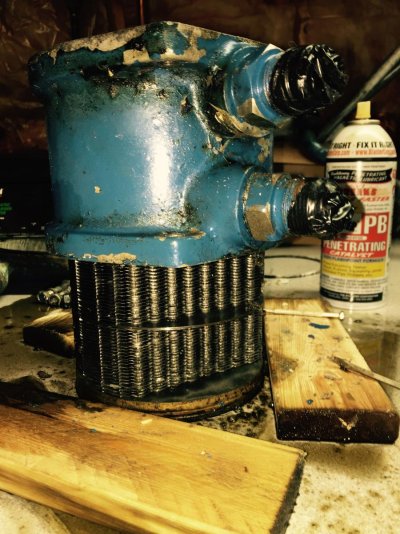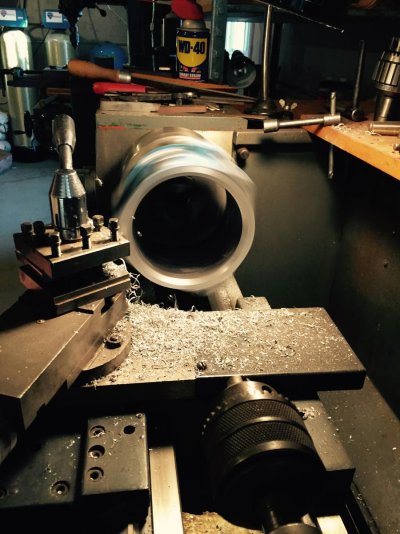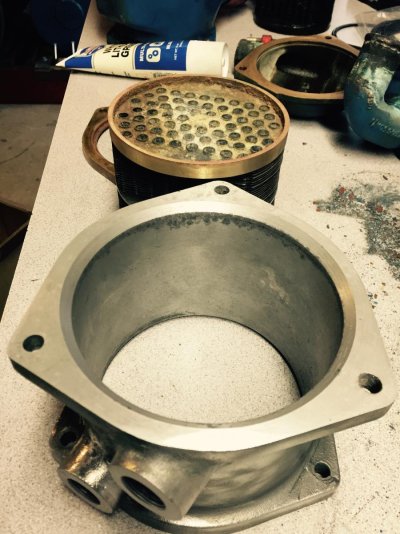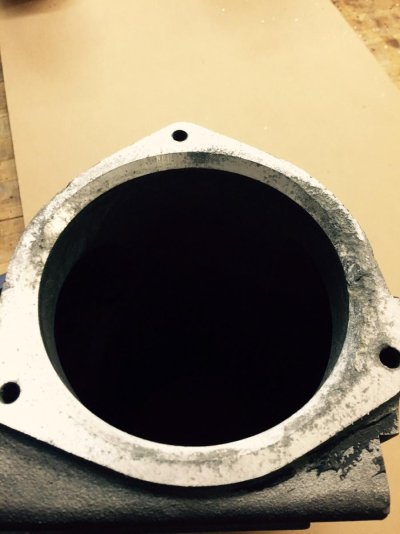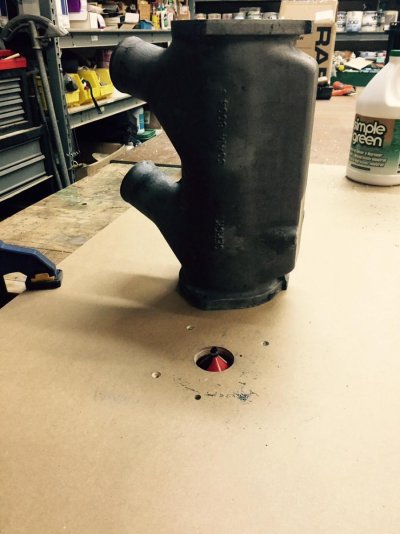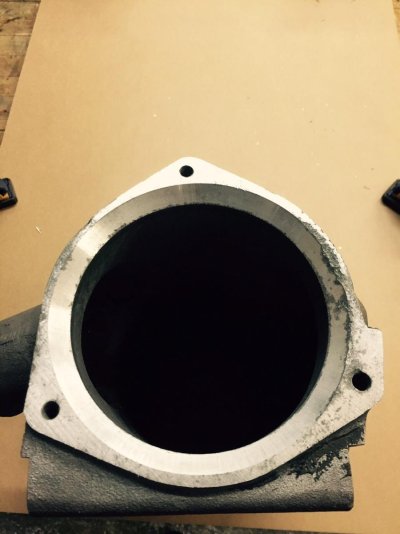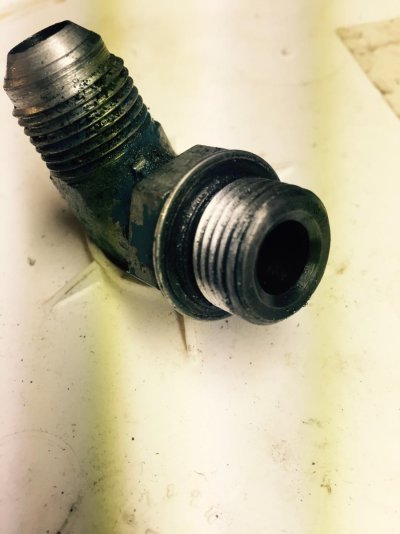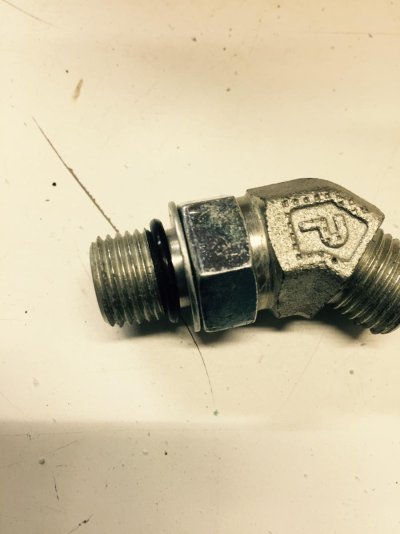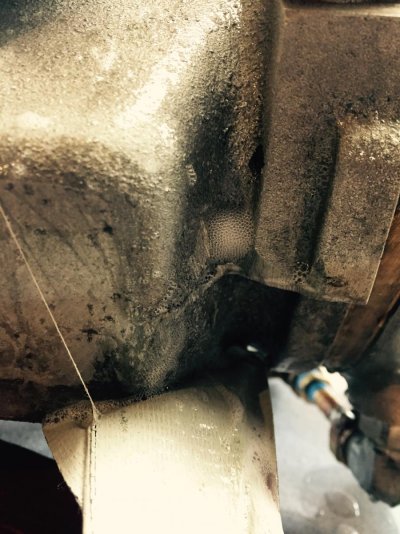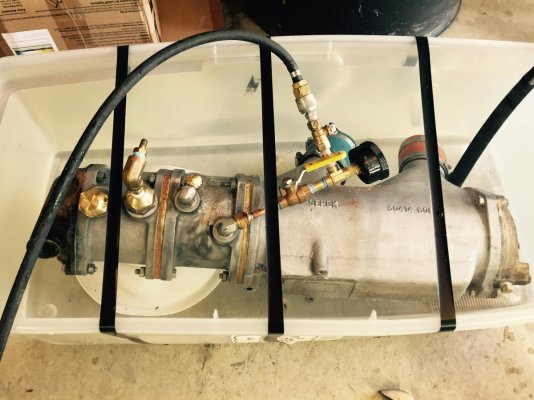Duvie
Senior Member
- Joined
- Nov 5, 2011
- Messages
- 341
One of my boat projects this Winter is to go through the multicoolers and manicoolers on my twin Perkins ST6.3544M. Pulled the multicolor off the starboard engine a few weeks back. You could see where there were some crystals forming at the seems where the different sections bolted together. A sign that the o-ring seals were failing and letting some seawater out. Each section had to be soaked with PB blaster for about a week before the tubes stacks could be pushed out without damage. I noted after disassembly that one side of each section had corrosion issues at the o-ring seal face that had been "repaired" by the previous owner with something like JB weld. I decided to take the transmission section next door to my father. He chucked it up in his lathe and took about 100 thousandths off the o-ring sealing face. The same amount had to be removed from the flat face to keep all the relationships the same. Since we shortened the shell by .100 inch I had to do the same to the tube stack. I did this with 100 grit wet and dry sandpaper glued to a flat surface and ground some off each end of the tube stack by hand. This only took about 5 minutes and avoided any damage to the tube stack. I am very happy with the results and everything should go back together like new when completed. The aftercooler section will take a little more work to set up in the lathe because it will need additional support due to it's lenght. No "before" pictures attached as they really didn't show the corrosion issue.

